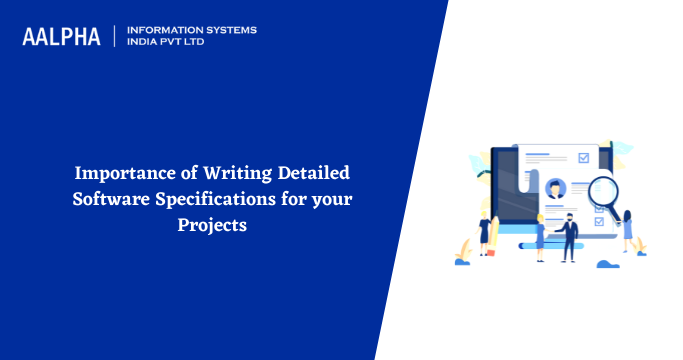An SRS is essentially an organization’s written knowledge (in advance of any authentic design or development work) of a customer’s or prospective client’s system requirements and dependencies at a particular time (typically) before any actual design or development work. It’s a two-way insurance policy that ensures both the customer and the company understand the other’s needs from that vantage point at any given moment.
What Is a Document Defined as a Software Requirements Specification (SRS)?
A software requirements specification (SRS) is a document that details the functions and behavior of the software. Additionally, it outlines the functionality that the product must have to meet the demands of all stakeholders (business, users).
A typical SRS consists of the following:
- A justification
- A summary description
- Specific needs
The most excellent SRS papers specify how the software will interact with hardware — or with other software. Practical SRS papers also take into mind real-world users.
Why Should You Use an SRS Document?
A software development requirements definition serves as the foundation for the rest of your project. It establishes the template for all development teams to follow.
It is used to communicate essential information to various teams, including development, quality assurance, operations, and maintenance. Moreover, this assure that everyone stick on the same page.
Utilizing the SRS assists in ensuring that standards are met. Additionally, it may assist you in making choices regarding your product’s lifespan, such as whether to retire a feature.
Specification of Software Requirements vs. Specification of System Requirements
A software requirements specification (SRS) details the software that will be produced in detail.
A system requirements specification (SYRS) is a document that contains information on a system’s requirements.
As SRS, the terms “software” and “system” are sometimes used interchangeably. However, a software requirement specification contains more precise information than a system requirement specification does.
How to Create an SRS Report
The following are five stages to take while writing an efficient SRS document.
-
Make an outline or Use an software requirements specification template
Create an outline for your software needs specification as a first step. This may be something you make. Alternatively, you may use an existing Software requirements specification template.
-
Begin with a Goal in Mind
Introduction to your SRS is critical. It establishes a baseline for the product you’re developing.
- Audience and Purpose
Define who will have access to the SRS in your business – and how they will utilize it. Developers, testers, and project managers may all be included in this category. Additionally, stakeholders from other areas, including leadership teams, sales, and marketing, may be included.
- Scope of the Product
Describe the program for which a specification is being made. Additionally, include advantages, objectives, and goals. This should be connected to the organization’s overarching business objectives, particularly if teams outside of development will have access to the SRS.
- Acronyms and Definitions
Incorporating a risk definition is prudent. Risk avoidance is a primary concern for many developers, particularly those who work on safety-critical development teams.
-
Provide an Overview of the Structure You Will Construct
The next stage is to describe what you’re going to develop. More importantly, is this a new version of an existing product? Is this a brand-new product? And is it an add-on to an existing product?
Additionally, you should explain why you’re constructing it and who it’s for.
- User Requirements
The requirements of the user — or the user classes and attributes — are crucial. You’ll need to specify who will use the product and how they will utilize it. Moreover, you’ll have primary and secondary consumers who will make frequent use of the product.
- Premises and Dependences
There might be several variables affecting your ability to meet the standards listed in your SRS. What are those determining factors?
Are there any assumptions you’re making about the SRS that may prove to be incorrect?
Finally, you should consider if your project is subject to any external influences. This might involve repurposing software components from another project.
-
Specify Your Exact Requirements
The next part is critical for your development team‘s success. This section contains information on the precise criteria for developing your product.
- Requirements for Function
Functional requirements are critical to the development of your product. These criteria may include infusion and battery if you’re constructing a medical gadget. Additionally, you may have a subset of risks and needs inside these functional requirements.
- Requirements for External Interfaces
External interface specifications are a subset of functional specifications. They play a critical role in embedded systems. Additionally, they detail how your product will communicate with other components.
-
Obtain SRS Approval
Once the SRS is complete, it must be authorized by relevant stakeholders. Additionally, everyone should examine the most recent version of the paper.
Conclusion
We could go on and on discussing requirements and specs. The process of developing high-quality software requirements specifications starts with a thorough characterization of the customer’s needs. Moreover, coupled with a natural language that combines quality indicators for strengths and weaknesses.
Do you have any software requirements? feel free to contact us & get a quotation at no cost!
